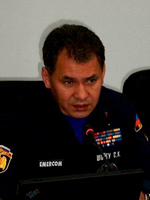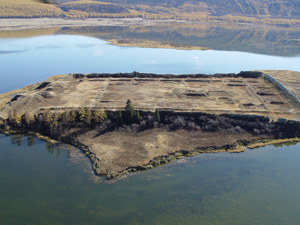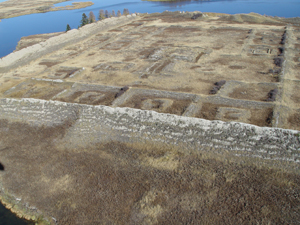 Tuva is going to turn into an archeological Mekka from this year on. A large-scale archeological expedition is going to start this summer in an ancient fortress on a Tere-Khol lake ireland, project initiator, Russian minister for Emergencies Sergei Shoigu told Tuvan journalists in an online video press-conference connecting Kyzyl and Moscow. He confirmed the plans to start excavations in Tuva. This year a camp will host 800 people in total - 200 students and scientists in 4 turns. Shoigu answering journalists' questions told a story of his own discovery of Por-Bazhyn - Clay Town in Tuvan - on the Tere-Khol lake. He said that he had used to work in archeological expeditions in his school years in Tuva. He remembers quite well that the acheologists were always Tuva is going to turn into an archeological Mekka from this year on. A large-scale archeological expedition is going to start this summer in an ancient fortress on a Tere-Khol lake ireland, project initiator, Russian minister for Emergencies Sergei Shoigu told Tuvan journalists in an online video press-conference connecting Kyzyl and Moscow. He confirmed the plans to start excavations in Tuva. This year a camp will host 800 people in total - 200 students and scientists in 4 turns. Shoigu answering journalists' questions told a story of his own discovery of Por-Bazhyn - Clay Town in Tuvan - on the Tere-Khol lake. He said that he had used to work in archeological expeditions in his school years in Tuva. He remembers quite well that the acheologists were always
 very concerned about the future of their outstanding finds. They dreamed of the excavations to turn into museums in the open air. It was in regard of the ancient Uyguhr town near Shagonar (Ulug-Khem district) and Arzhaan-1 (1960-ties, Pii-Khem district) with a huge tsar burial mound 160 m in diametres. And their dreams never came true. We know about their unque findings now only by pictures and descriptions in scientific works. very concerned about the future of their outstanding finds. They dreamed of the excavations to turn into museums in the open air. It was in regard of the ancient Uyguhr town near Shagonar (Ulug-Khem district) and Arzhaan-1 (1960-ties, Pii-Khem district) with a huge tsar burial mound 160 m in diametres. And their dreams never came true. We know about their unque findings now only by pictures and descriptions in scientific works.
We want it to be other way in case of Por-Bazhyn which I first saw on an aero film of the forest fires in Tuva, minister said. I got interested and now this project is far in process. A cultural fund has been set with its web-site.
'We shall build there a Russian Shaolin and invite everybody to come there. And our youth will come I am sure. They will learn philosophy, Tibetan medicine, horseracing, and oriental martial arts in there,' Shoigu says.
In Tuva itself an attitude to these great plans is not unanimously positive. Tuvan scientists are afraid of the improper restoration works substituted by new construction. Ordinary people think that the fortress become a visit place of only rich people as not any would be able to afford an air flight to the place.
The Uyghur town on a Tere-Khol island dates back to approximately the 8th century. It was ruined by fire. Little is known about its inhabitants. There were found rests of the only warrior who had been an extremely tall man with Europeid features.
 Nowadays the ruins of the Por-Bazhyn fortress, which is located on a Lake Tereh-Khol island in Tuva near Russian-Mongolian border, look like a rectangular labyrinth of structures similar to a Buddhist or Hindu mandala. Nowadays the ruins of the Por-Bazhyn fortress, which is located on a Lake Tereh-Khol island in Tuva near Russian-Mongolian border, look like a rectangular labyrinth of structures similar to a Buddhist or Hindu mandala.
The scientists suggest that the fortress might be a palace or a temple complex, which could be destroyed in a war action over one thousand years ago.
Sergei Shoigu says that the bridge connecting Por-Bazhyn with the district's territory 680 m long is under construction. The camp is going to be constructed late March-early April.
Students' recrutement into the summer expedition from universities in Moscow, Saint-Petersbourg, Kazan, Krasnoyarsk and Kyzyl is also under way.
|
